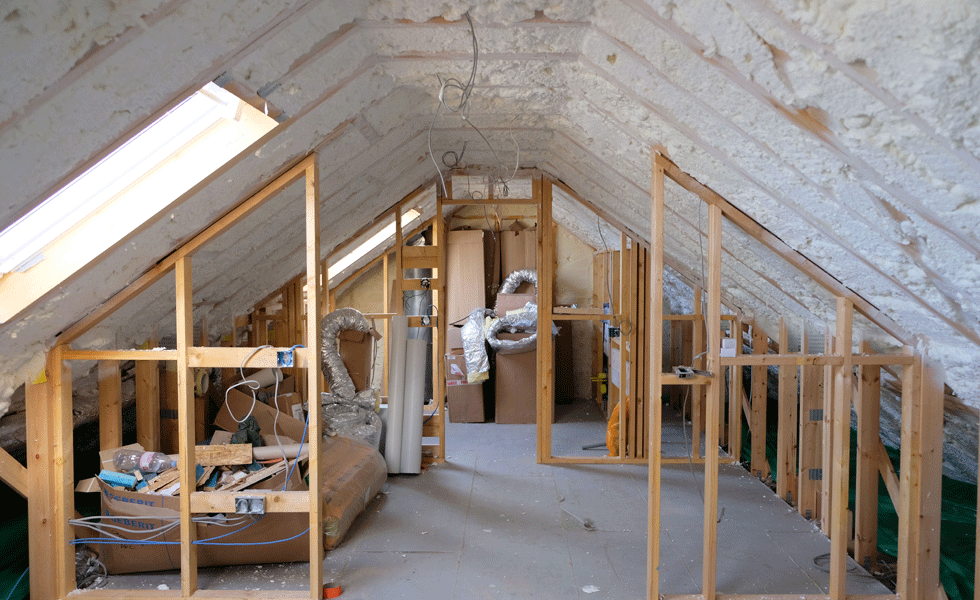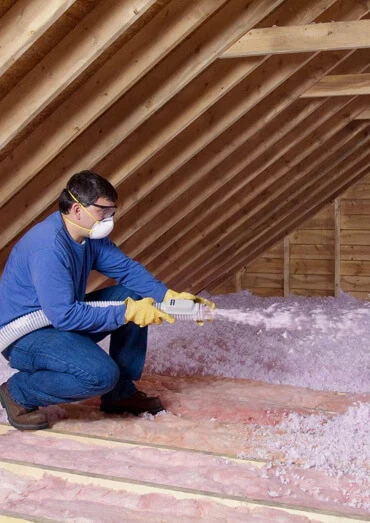The Ultimate Guide to Picking the Right Attic Insulation DFW Solutions
The Ultimate Guide to Picking the Right Attic Insulation DFW Solutions
Blog Article
Discover the Different Kinds Of Attic Insulation and Their Special Advantages for Your Home's Power Performance

Fiberglass Insulation
Fiberglass insulation is one of one of the most typically used materials for attic insulation as a result of its outstanding thermal performance and cost-effectiveness. Composed of little glass fibers, this product efficiently traps air, creating a shielding barrier that assists keep consistent interior temperature levels. Its high R-value per inch makes it specifically reliable at withstanding heat transfer, which is essential for power conservation in homes.
Setup of fiberglass insulation is fairly uncomplicated, typically readily available in batts or loose-fill kinds, fitting various attic room arrangements. In addition, it is non-combustible and resistant to wetness, lowering the threat of mold advancement. This longevity contributes to its durability, making fiberglass a practical long-lasting investment for homeowners.
Additionally, fiberglass insulation is frequently manufactured from recycled materials, which improves its eco-friendliness. The product can likewise contribute to soundproofing, reducing noise transfer in between areas. While it is vital to wear protective gear throughout installment to prevent irritation from the fibers, the overall benefits of fiberglass insulation, consisting of energy savings and ecological considerations, make it a preferred choice for improving attic efficiency and promoting a comfy living environment.
Spray Foam Insulation
Spray foam insulation is an extremely reliable alternative for attic room insulation, recognized for its exceptional air securing and thermal efficiency. This cutting-edge insulation material is made up of a mixture of isocyanate and polyol resin, which, when integrated, broadens swiftly to fill up gaps and tooth cavities in the attic room room. Its capability to comply with numerous surface areas ensures a continual obstacle versus air leaks, substantially minimizing warm loss throughout colder months and warmth gain during warmer periods.
One of the key benefits of spray foam insulation is its high R-value per inch, which suggests it provides excellent thermal resistance in a fairly thin application. This is particularly beneficial in attics where room is typically restricted. In addition, spray foam can assist decrease dampness accumulation, decreasing the danger of mold and mildew development, which can be damaging to both the structure and interior air top quality.
While the preliminary price of spray foam insulation might be greater than conventional options, its lasting energy cost savings, paired with enhanced comfort and improved home value, make it a rewarding financial investment for property owners looking for enhanced power efficiency. Attic Insulation DFW. Overall, spray foam insulation stands apart as an efficient remedy for enhancing attic room insulation
Cellulose Insulation

Cellulose insulation is a popular selection for attic room insulation, mostly made up of recycled paper items treated with fire resistants. This eco pleasant alternative is recognized for its exceptional thermal efficiency, effectively minimizing warmth transfer in both summertime and winter season. visit our website The dense structure of cellulose permits it to fill spaces and gaps in attic room spaces, giving a smooth obstacle versus air leaks.
One of the considerable benefits of cellulose insulation is its capability to stand up to mold and mildew and pests, owing to the fire resistant treatments made use of during manufacturing. Additionally, it flaunts a high R-value per inch, which equates into remarkable energy efficiency. Property owners can expect reduced cooling and heating expenses as an outcome of enhanced insulation.
Installment is commonly completed through blowing loose cellulose right into the preferred location, permitting a quick and reliable procedure. This technique also decreases disturbance to the existing framework. Furthermore, cellulose insulation has a reasonably low ecological influence, as its manufacturing process uses recycled products, adding to sustainable building techniques.
Rock Woollen Insulation
Among the various alternatives for attic room insulation, rock wool, likewise referred to as mineral wool, stands apart as a result of its impressive thermal and acoustic efficiency. Made from recycled or all-natural materials, rock wool is created by melting rock and rotating it into fibers, causing a product that uses excellent insulation properties.
Among the considerable benefits of rock wool insulation is its high R-value, which suggests its performance in resisting warm circulation. This characteristic not only boosts power performance but also adds to keeping a comfy indoor temperature level year-round. Additionally, rock wool is inherently fireproof, making it a more secure choice for homes as it can stand up to high temperatures without melting or releasing toxic fumes.
Furthermore, rock wool insulation stands out in soundproofing abilities, efficiently minimizing noise transmission between rooms and from outdoors sources. Generally, rock wool insulation provides a thorough solution for boosting power effectiveness, this link safety, and convenience in domestic setups.
Glowing Obstacle Insulation
Glowing barrier insulation functions as an effective solution for decreasing warm transfer in attic rooms, particularly in warmer climates. This kind of insulation works by mirroring convected heat far from living spaces, therefore lowering the quantity of warmth that gets in a home throughout heat - Attic Insulation DFW. Generally made up of a highly reflective material, such as light weight aluminum foil, glowing obstacles are mounted in attics, facing the roof, where they can obstruct incoming warm from the sun
The primary benefit of glowing obstacle insulation is its capacity to lower cooling costs. By mirroring heat as opposed to absorbing it, glowing obstacles can help maintain an extra stable interior temperature, reducing the workload on air conditioning systems. This effectiveness translates right into reduced power expenses and raised convenience for property owners.
In enhancement to power cost savings, glowing barriers can likewise add to enhanced interior air high quality. By reducing heat accumulation, they help minimize humidity degrees, which can prevent mold and mildew growth and improve total air flow. When set up properly, radiant barrier insulation can be a vital enhancement to any type of energy-efficient home, making it a deserving consideration for property owners wanting to boost their attic room insulation method.
Verdict
In verdict, comprehending the different kinds of attic insulation-- fiberglass, spray foam, cellulose, rock woollen, and radiant obstacles-- makes it possible for house owners to make educated choices concerning energy efficiency. By picking the suitable insulation material, substantial reductions in energy costs can be attained, along with improvements in interior convenience.

In verdict, comprehending the numerous types of attic insulation-- fiberglass, spray foam, cellulose, rock wool, and radiant barriers-- makes it possible for homeowners to make informed decisions concerning power performance.
Report this page